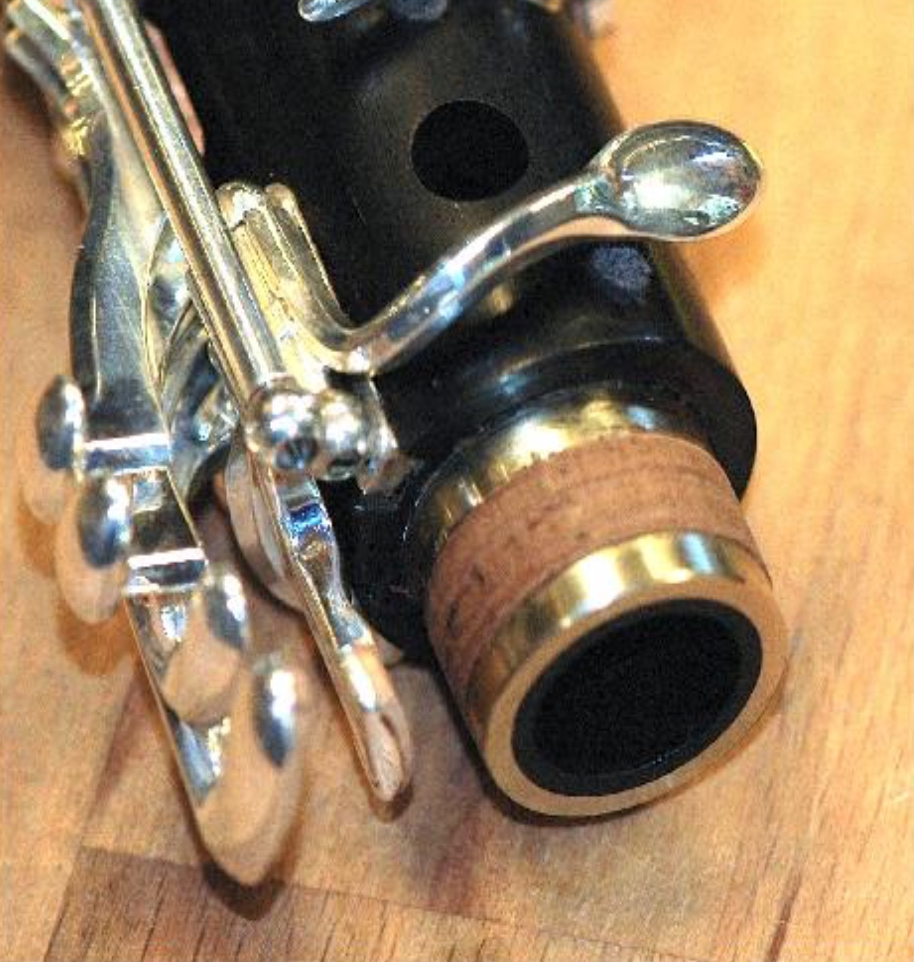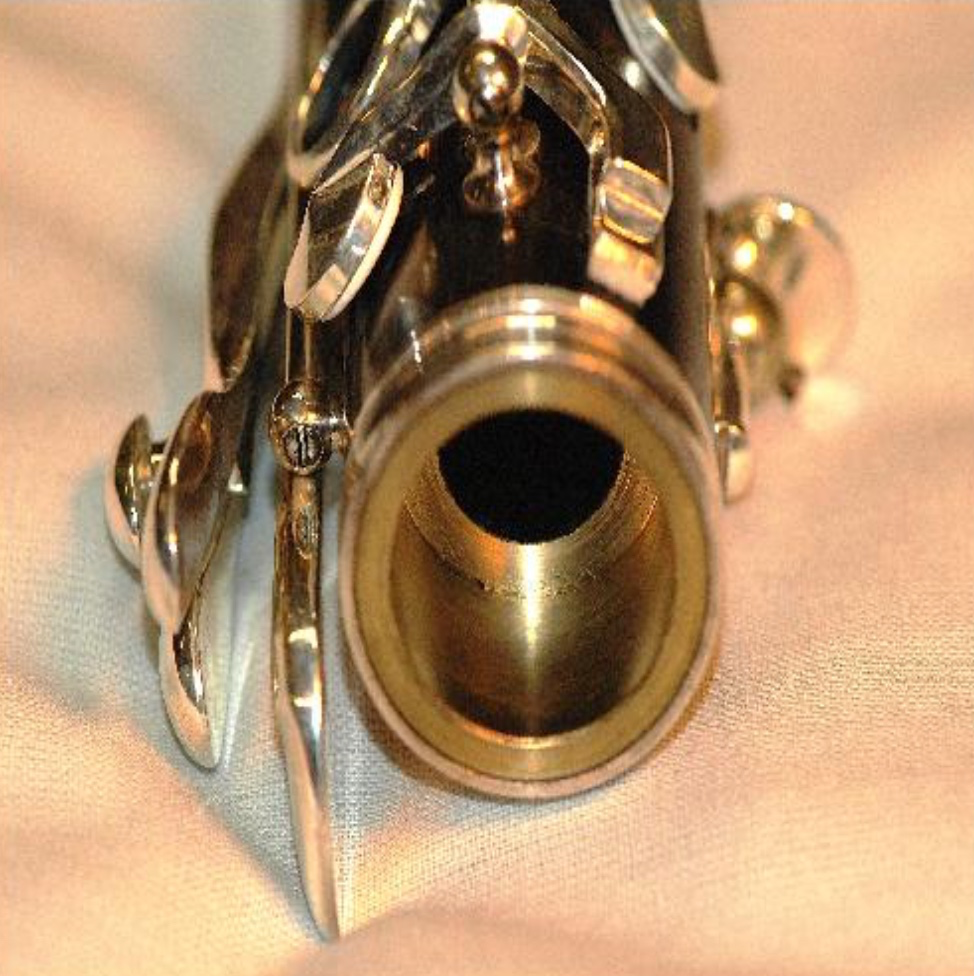-
Lohff & Pfeiffer
About Lohff & Pfeiffer
Iimprint
Contact
Newsletter
Location
L&P team
- Instruments
General
Trade options
About clarinet
Search specific instrument
Ab-clarinet
Eb-clarinet
D-clarinet
C-clarinet
Bb-clarinet
A-clarinet
Mozart basset-clarinet A
G-clarinet
Bassethorn F
Alto-clarinet Eb
Bass-clarinet
Contraalto Eb-clarinet
Contrabasse Bb-clarinet
German-Albert system Bb
Reform Boehm A & Bb
Peter Bastian Instruments
Plateau clarinets
Quartertone clarinet
- L&P Optimization
Optimization
Customization
Specialities
Special Keywork
- Accessories
General
Care products
For instruments
Reeds
Tools for reeds
Straps and hand rests
- Repair
Book time
About Repair
Maintenance
Plating-Surface treatment
Pads
Padding style
Cracks
Tone hole problems
Joints
- Tips & Advice
How to..
Videos
Worldwide external information
Problems & help
Education & learning

Metal tenon.L&P Metal tenon
Benefits:
Metal socket and tenon sleeve at middle joint
Removes wobble between upper and lower joints
Increases response and projection
Adds consistency of tonal color
Provides more even resistance in all registers
The Problem:
When assembling a clarinet, most clarinets have just a simple wooden top-joint tenon, which needs to be pushed into the lower-joint receiver. Most tenons are slightly wider at the top, and a thick tenon cork holds the joints tightly together. It is the simplest and most economical production but comes with several disadvantages.
1. Water will enter the socket at the end and will cause the tap to swell. It is not uncommon that new wooden instruments are hard to assemble after they have been played for a while. The extended tenon will not fit properly into the lower joint receiver because the tenon cannot extend to the same degree. The metal ring around the receiver will prevent that from happening. As a result, the instrument cannot be properly assembled. You will end up with a gap at the bottom, and more water will collect inside the gap.
2. To solve this problem, the wood at the tap will need to be removed, which in turn makes the tenon thinner. After some months, you will experience the joints starting to wobble. A new thicker cork could then help temporarily but the wobble will come back after some time.
3. The first tapered tenon joint requires you to push the joints all the way together to ensure a proper fit with no wobbling. It prevents you from improving your intonation if the instrument gets warm. The increased temperature will make your instrument sharp. To adjust your intonation, you could pull out the barrel, but this will have a bigger effect on your left-hand notes and less on your right-hand ones. A better solution would be to pull out the barrel a little and the lower joint as well. It is unreliable to do it on a tapered/conical tenon, but it works great on a precisely fitted cylindrical one.
The Solution:
The L&P Metal tenon system
A better solution is a fitted metal tenon, which doesn't allow any wobble, one that connects both joints securely. It allows you to pull out. It doesn't change depending on your playing or if the humidity changes. Our tenons are so tightly fitted that the body feels like it is made out of one piece of wood, which also increases the resonance.
Through the installation of a precision metal socket and tenon sleeve to the middle joint of the clarinet, the two body parts will be connected like the body was one piece.
The socket is manufactured to fit snugly to the tenon. Due to its cylindrical shape, you can pull out the joints without risking a leak or wobble.
It provides for a better seal and a consistent sound with even resistance throughout the scale. This is especially noticeable in the clarion register. The sound will be more focused and the response immediate, especially in the altissimo.
How it works: When you blow into your instrument to produce a note, your air column causes the instrument to vibrate. You will feel these vibrations at your fingertips. With your air and the resonating instrument, you have two vibrating systems in action that will influence each other. It will produce additional overtones and enrich the sound.
By connecting the two body parts very tightly, you increase the mass that has to vibrate. The very first note will, therefore, take a little longer before it has its full sound quality. Once the vibration starts, it will take longer to stop vibrating, requiring less energy to play the next note. This phenomenon is well known. It is easier to slur to some difficult high notes than to attack them.
On special request we can also apply this technique to all the other tenons, improving the response even more.
Help us to get better
Was this article helpful?
Comments, additions or questions are always welcome at: info@clarinet.dk(C)2011 - by Lohff & Pfeiffer USA-6220 Rhode Island Ave-Riverdale Park MD 20737 - USA - Phone: (812) 340-0595 & 415 470 6879 - info@clarinet.dk - Instruments






